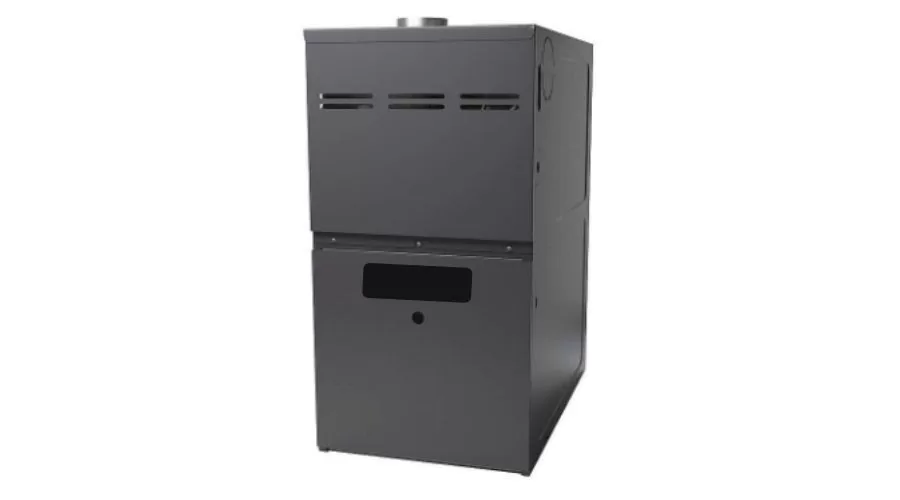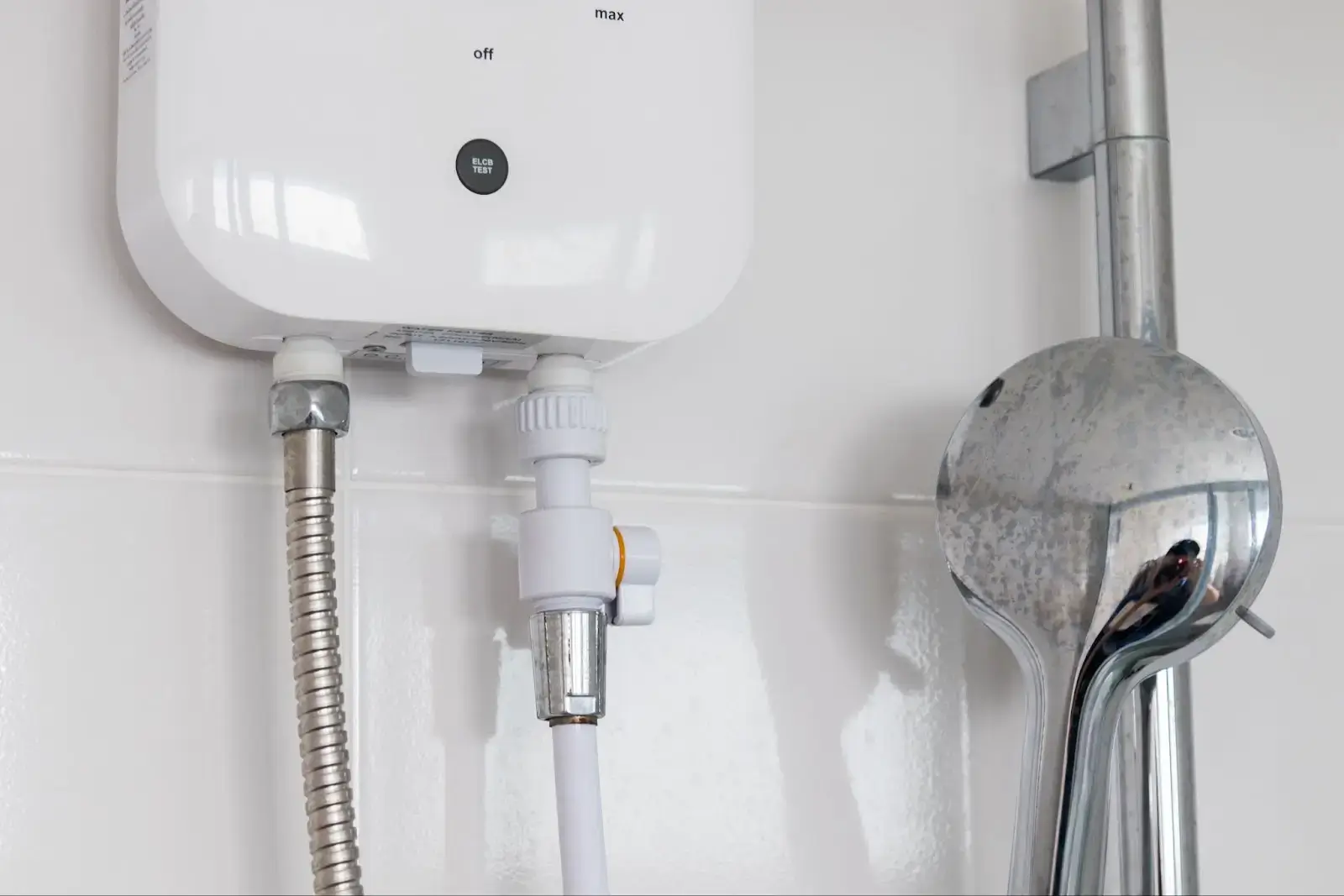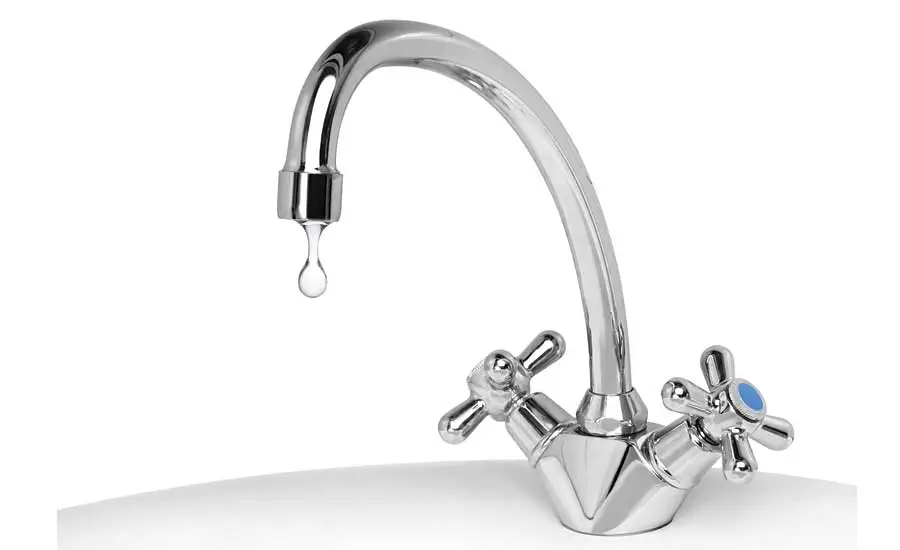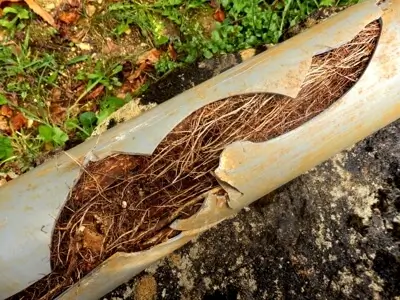Most homeowners take their furnace's operation for granted year after year...until that dreaded day it sputters out for good. While these hardworking heating systems are designed to be durable, even the best ones inevitably face an expiration date.
So how can you get a heads up on when your home's furnace is nearing the end of its lifespan? Are you proactively replacing perfectly good equipment too soon? Or pushing that old clunker well past its prime? Either situation proves costly in the long run.
Like most major home appliances and mechanicals, furnaces carry an expected service life based on care, usage patterns, and other factors. Understanding what impacts their longevity trajectory helps you budget wisely while avoiding surprise breakdowns.
In this guide, we'll explore the average furnace lifespan you can expect based on the system's age, type, size, maintenance history, and more. You'll learn the telltale signs that your unit has entered its golden years so you can start preparing. We've also got tips on optimal thermostat practices and maintenance habits to maximize your existing furnace's remaining miles.
Whether your goal is just squeezing the last ounce of life out of an aging furnace or upgrading proactively, getting a grip on your system's longevity projections helps you make smart long-term planning decisions. No more being left out in the cold!

Average Lifespan of a Furnace
Like any hardworking appliance, furnaces put in loyal service year after year until they inevitably run out of gas in the tank. While no heating system lasts forever, understanding their typical lifespan ranges helps you budget wisely and avoid surprise breakdowns.
For most modern furnaces, you can typically expect somewhere between 15-30 years of performance from the unit with proper care and annual maintenance. But pinpointing your system's precise expiration date depends on a few factors.
Gas Furnaces
On the longer end of that lifespan spectrum, you'll find gas-fired furnaces clocking impressive distances. Reputable HVAC brands tend to rate their gas furnace models for around 20-25 years of service under normal usage.
With diligent maintenance and ideal operating conditions, it's not out of the ordinary for well-built gas furnaces to keep trucking into the 25-30 year range either. Their simplicity and lower operating costs incentivize owners to maximize every last mile.
Electric Furnaces
While still tough appliances by design, electric furnaces tend to have somewhat shorter lifespan projections on average - usually around 15-25 years from most manufacturers.
These systems rely more heavily on the longevity of electrical components like heating elements that degrade over time. But with some affordable part replacements along the way, a well-maintained electric furnace can still exceed that 20-year mark easily.
Older Furnaces
Of course, if your home's furnace install predates many modern designs and efficiency standards, all bets are off! Curating one of those gas guzzlers running on fumes after 30+ years definitely qualifies as a certified antique. We'll cover recognizing when it's time to retire your aged system shortly.
Factors Affecting Furnace Lifespan
While the general lifespan ranges from 15-30 years provide a helpful guideline, numerous variables can cause your furnace's longevity to deviate from those norms - both shorter and longer. From the type of system to installation quality and maintenance habits, several elements influence just how many miles you'll get out of your heating investment.
Type of Furnace
As we touched on initially, one of the biggest factors separating furnace lifespan projections is simply the heat source it uses - gas combustion versus electric elements. But there are other intricate system variations within those broader categories too.
On the gas side, you've got distinctions like condensing vs non-condensing, multi-stage or two-stage versus single-stage, and different efficiency ratings (80% AFUE versus 96% AFUE). Generally, more advanced condensing and multi-stage gas furnaces with higher efficiency ratings tend to have longer projected lifespans from most manufacturers.
With electric furnaces, variables like the specific type of heating elements (aluminum ribbon versus steel tubular) as well as more sophisticated blower designs (PSC, X13, ECM) heavily influence component lifecycles and overall longevity too.
Simply put, investing in premium furnace models with advanced energy-saving technologies from trustworthy brands provides a sturdier longevity foundation to build from.
Furnace Size and Proper Sizing
While you might think "bigger is better" when it comes to furnaces, being oversized is just as problematic as having an undersized unit for your home's heating needs. Equipment that's too large cycles on and off repeatedly, preventing it from ever reaching optimal operating temperatures. This excessive idling creates increased thermal stress that prematurely wears components.
Conversely, an undersized furnace runs constantly without enough power to keep up with heating demands. This excessive overworking accelerates mechanical breakdowns while wasting energy dollars.
That's why proper sizing calculations based on your home's square footage, insulation levels, number of rooms, and regional climate data are so crucial during installation. The industry's trusted sizing methodologies like those from ACCA ensure your system operates at peak efficiency without undue stress.
When contractors take shortcuts or customer preferences supersede the calculated heating load requirements, inappropriate furnace sizing virtually guarantees a shorter-than-expected lifespan.
Installation Quality
Even with a properly sized furnace unit, poor installation workmanship can severely hamstring its longevity too. Little oversights from inexperienced or corner-cutting contractors create rippling issues over time.
Sloppy ductwork designs with excessive bends, crimps, or low-quality materials generate excess air resistance that forces the blower to work harder. Improper venting or combustion air configurations starve furnaces of the ideal airflow. Rooftop equipment left exposed to harsh precipitation rather than sheltered takes a constant performance-eroding beating.
Meanwhile, rush jobs that neglect thorough airflow testing and static pressure measurements lead to inferior temperature regulation. Incorrectly charging refrigerant lines or wiring mistakes only compound potential lifespan impacts.
Taking the time to vet experienced HVAC installers using industry best practices ensures your furnace components are set up for heating season success and respectable longevity from day one. Cutting corners on the front-end setup virtually guarantees you'll be replacing sooner.
Regular Maintenance and its Impact
While proper sizing and install quality provide a solid foundation, regular preventative maintenance is equally vital for maximizing your furnace's lifespan potential. Neglecting simple annual tune-ups creates a cascade of negative effects.
As air filters go unchanged, blower components get gummed up with dust and debris that accelerates wear. Delaying lubricant refreshes causes undue friction that degrades bearings and seals rapidly. Ignoring combustion chamber cleaning allows corrosive buildup that can crack heat exchangers or foul critical sensors.
And those are just the obvious areas - furnaces contain dozens of other serviceable parts like igniters, burners, pressure switches, and more that all require periodic adjustments, cleaning, and calibrations. Not performing that routine TLC based on manufacturer recommendations inevitably results in furnaces deteriorating far faster than their expected lifespans.
But with a detailed maintenance checklist rigorously followed, that same furnace operates far more efficiently without the undue stresses and strains that abbreviate longevity. Consistent care trumps age every time.
Thermostat Settings and Usage Patterns
Your furnace's lifespan is also highly dependent on its annual workload and operating patterns - factors heavily influenced by your scheduled thermostat settings and personal heating habits.
Drastic temperature swings like setting the thermostat to 80°F with everyone gone during the day then cooling it to 62°F every evening creates significant amounts of equipment cycling and thermal expansion/contraction. These constant heating and cooling cycles accelerate component fatigue far faster than steadier, more moderate temperature changes.
Similarly, if you ever find yourself programming wildly different weekday vs. weekend thermostat schedules, that unpredictable hot-and-cold operation severely impacts furnace longevity too.
The more you can practice energy-saving setback strategies that make gradual adjustments instead of jarring hot-to-cold changes, the less overall strain your equipment endures. Steady, stable heating runtimes optimize furnace lifecycles significantly versus systems being worked like rented mules all winter.
Creating appropriate, consistent thermostat schedules tailored to your home's patterns minimizes wasted energy while maximizing furnace lifespan. Zoning systems that compartmentalize heating calls provide even greater workload optimization. A little foresight goes a long way for longevity!
Recognizing When to Replace Your Furnace
Even with the stars aligning on all those lifespan-extending factors we just covered, no furnace lasts forever. At a certain point, every system enters a stretch where replacement just makes more financial and efficiency sense than sinking money into constant repairs.
But pinpointing that ever-shifting expiration date remains tricky. On one hand, you don't want to jump the gun prematurely on a costly new furnace install if your current one's still got decent life remaining. Yet waiting too long also risks enduring freezing breakdowns and skyrocketing utility bills from an inefficient dinosaur.
Luckily, some telltale signs and symptoms indicate when your furnace is entering its final laps so you can start budgeting that upgrade timeline accordingly. Pay attention to these red flags:
The Golden Oldie Odometer
One of the most obvious factors is simply your furnace's calendar age relative to its projected lifespan ranges. If your gas furnace has already blown past 20 years of indoor heating duty, or an electric model is antique-ing around that 15-year mark, those are huge red flags.
While not a dead giveaway that replacement is imminent, once a furnace surpasses its life expectancy projections, you're basically just heating on borrowed time before major components seriously fail. Smart owners start putting aside funds for the inevitable retirement.
The Inefficiency Drain
Another surefire signal that your furnace's best days are behind it? If you've noticed your energy bills climbing year-over-year even with similar heating runtimes and thermostat settings. As furnaces degrade with wear-and-tear, their efficiency tanks in the form of higher fuel or electrical consumption to produce the same amount of heating output.
If your monthly utility statements keep spiking despite no real changes to your home or usage patterns, that's a pretty strong indication your aging furnace can no longer keep up and replacement should get prioritized soon.
No Amount of Repairs Can Fix This
While we all hope to squeeze every last drop of life from big-ticket home items, eventually a time comes where it's more cost-effective to cut your losses on repeated repairs. Once the cumulative repair costs start rapidly outpacing a new system's installation fees, that's a clear transition signal.
Routinely pumping hundreds or thousands into pit-stop fixes each season really just amounts to throwing good money after bad if your furnace surpasses its reasonable life expectancy. At a certain point, continual repairs truly mask higher expenses compared to executing that full system swap.
Once More, With Feeling
But probably the most definitive indicator that your furnace has entered end-stage life? When it can no longer consistently maintain steady, comfortable indoor temperatures no matter how diligent your repair efforts. Rooms with hot or cool spots, cycles running more frequently than usual, the system starting/stopping erratically.
These types of obvious performance issues mean your furnace's deteriorating components have reached critical failed states where no amount of patch jobs can compensate. It's simply lost the ability to effectively and evenly heat your home. And that's a sure sign replacement shouldn't be postponed much longer if warm living conditions are a priority!
From the hard numbers to those "you'll know it when you feel it" moments, furnaces tend to provide plenty of advanced warning signs that their time is coming. Stay alert to avoid getting caught out in the cold completely unexpectedly!
Tips for Extending Your Furnace's Lifespan
While the inevitable furnace retirement will eventually rear its ugly head, no homeowner wants to rush things along faster than necessary either. The good news? Plenty of simple preventative measures and smart usage habits exist for maximizing your system's longevity potential.
From routine maintenance musts to cost-effective upgrades and optimal thermostat practices, a little extra proactive effort goes an impressively long way towards stretching your furnace's overall lifespan. And who couldn't use a few extra years of heating before spending big bucks on replacements?
Stay On Schedule with Professional Tune-Ups
Furnaces contain dozens of working parts and complex systems collaborating to provide your home with reliable warmth each winter. From blower assemblies and electrical firing components to heat exchangers and exhaust systems, these are finely-tuned pieces of equipment.
That's why most manufacturers recommend annual professional maintenance inspections and tune-ups - to keep everything cycling smoothly and catch developing issues early before they snowball into bigger problems. At minimum, plan for twice-yearly pre-season appointments before heating and cooling modes kick in.
A thorough furnace tune-up from a certified HVAC technician includes cleaning and inspection checklists to optimize every component for peak operating condition. Critical tasks like lubricating blower motors, checking combustion gas levels, testing safety switches - essentially a comprehensive rejuvenation of both performance and safety controls.
Skipping these detailed evaluations is just asking for poor furnace health and accelerated aging. Consistent preventative care remains your best line of defense against premature breakdowns.
Stay Filter Fresh
While professional maintenance provides that heavy lifting, DIY air filter replacements are an equally crucial piece of the longevity puzzle. Routinely replacing or cleaning your furnace's air filters promotes better airflow while reducing dust and debris buildup on components.
As filters become clogged, your furnace has to work harder and cycle more frequently to move heated airflow through that increased resistance. This added stress on the blower assembly, heat exchangers, and other components equates to faster deterioration. Essentially, clean filters allow "easy breathing" and reduced wear-and-tear on your equipment.
Most air filter replacements only need to happen quarterly or annually at most. Just make a habit of checking for discoloration or excessive buildup each season. Cleaner filters really do equal healthier, longer-lasting furnace operation.
Seal and Insulate Your Home
Along with routine upkeep tasks, managing your furnace's overall workload by improving home efficiency stands out as an unexpected longevity booster. The less frequently systems have to cycle on, the more high-stress startups and shutdowns components endure.
Upgrading leaky windows, caulking drafty doors, and insulating attic spaces help reduce overall heating demands so systems run fewer, longer cycles to maintain comfortable temperatures. This steady-state operation creates less component fatigue compared to frequent cycles of expansion and contraction.
Be a Thermostat Master
Similarly, smart thermostat practices play a pivotal role in regulating those heating cycles for longevity too. Avoid setting drastic temperature swings like turning the heat up 15° when arriving home after work. Create steady, moderate schedules without wide uncomfortable setbacks.
Newer smart thermostats automate this optimization by employing gradual setback recovery based on equipment runtimes. Managing those incremental adjustments prevents over-taxing furnaces and maximizes both comfort and longevity.
Upgrade to Advanced Efficiency
When the time does eventually come for repair or full-system replacement, longevity-minded homeowners should seriously consider investing in upgraded high-efficiency furnace technologies to gain exponential lifespan value.
Modern condensing furnaces with ECM blower motors and multi-stage operation run far more intelligently, adjusting heating output levels to minimize hard starts/stops. Their superior combustion and heat transfer designs experience far less component degradation too.
While premium upfront pricing often gives sticker shock versus builder-grade models, the longevity dividends and drastically cheaper monthly operating costs for high-efficiency units make the investment incredibly worthwhile. Recouping costs through lower utility bills while enjoying an extra 5-10 years of reliable service adds major value.
The Bottom Line
At the end of the day, furnaces resemble living things - how you care for and "treat" them impacts their longevity significantly. Stay proactive with professional maintenance, manage operational workloads, and upgrade to advanced technologies.
Your older system might just make it a few extra years before costly replacements are required. That's money heating your home, not throwing it away!
Common Furnace Problems and Troubleshooting
Despite your best efforts to extend its lifespan, furnaces inevitably encounter operational issues throughout their life cycles. From unusual noises and electrical glitches to airflow problems and safety concerns, these hiccups are bound to occur.
The key lies in identifying common furnace symptoms rather than dismissing them and hoping they'll resolve on their own (which rarely happens!). With some basic troubleshooting knowledge, you can often pinpoint the underlying cause more quickly and determine whether a simple DIY fix or professional service is required.
Strange Sounds
If your furnace starts emitting unusual noises like banging, rattling, screeching, or motor whining, take notice! While some operational noise is normal, abrasive or high-pitched sounds indicate a potential mechanical problem.
Banging noises could indicate expanding or contracting ductwork due to improper airflow, while rattling often results from loose blower access panels or components. Whining blower motors may precede bearing failures, necessitating replacement.
Don't ignore unusual sounds—they serve as an early warning system for emerging issues that may worsen if left unaddressed.
Hot Air, But Not Enough
Another common issue is weak airflow from supply vents despite the furnace running. This often stems from blower problems, such as issues with the motor, fan assembly, or control board operation.
Before calling a technician, check for any obvious airflow obstructions, such as excessively dirty air filters that strain the blower. Additionally, inspect blower access areas for loose panels that could allow conditioned air to escape.
Simple DIY remedies may include replacing the air filter, tightening blower panels, or resetting the system. However, persistent airflow issues typically require professional diagnosis and repair.
Gas Furnace Failures
For gas furnace systems, certain symptoms may indicate more urgent failures warranting immediate attention.
Persistent gas smells, frequent furnace shutdowns shortly after startup, cracked or corroded heat exchangers, or a lack of warm airflow may indicate gas control valve or burner assembly issues. In such cases, it's essential to shut down the system and call a certified technician promptly to prevent safety hazards like carbon monoxide exposure.
Tripped Breakers / No Power
Occasional electrical faults in furnace systems can manifest as tripped circuit breakers or a complete lack of power.
First, check for obvious issues like a flipped disconnect switch near the equipment and clear any obstructions from blower areas. Test outlet voltages and ensure internal wiring connections are secure.
If breakers continue to trip or power remains unavailable after basic troubleshooting, an internal electrical fault or control board failure may require professional attention. Avoid attempting repairs beyond your skill level to ensure safety.
Stay Alert, Stay Warm
While modern furnaces are designed for long-term reliability, age and wear inevitably lead to malfunctions requiring troubleshooting and repair. Keep an eye (and ear) out for emerging signs of trouble and address them promptly and effectively. Listen to your furnace's signals—it'll continue providing warmth for years to come!
Sunset on Your Furnace's Lifespan
Like any household appliance workhorse, even the highest quality furnaces can't keep pumping out heat indefinitely. All those years of tireless service eventually culminate in a grand finale replacement - but only once the costs of upkeep and inefficiency outweigh investing in new equipment.
From understanding average lifespan ranges to monitoring performance symptoms and practicing longevity-extending maintenance, this guide has armed you with the full furnace lifecycle knowledge. You're now equipped to make smart decisions about when it's time to stick a fork in that old heating system.
But why go it alone on such an important investment? For professional furnace installations, replacements and inspections you can truly warm up to, our certified experts at Sunset Heating & Cooling are standing by to lend decades of experience.
For unbeatable furnace service and advice you can trust in the Portland area, give us a call at (503) 500-5866. With our team on the job, extending your home's heating horizons becomes our guaranteed commitment.







